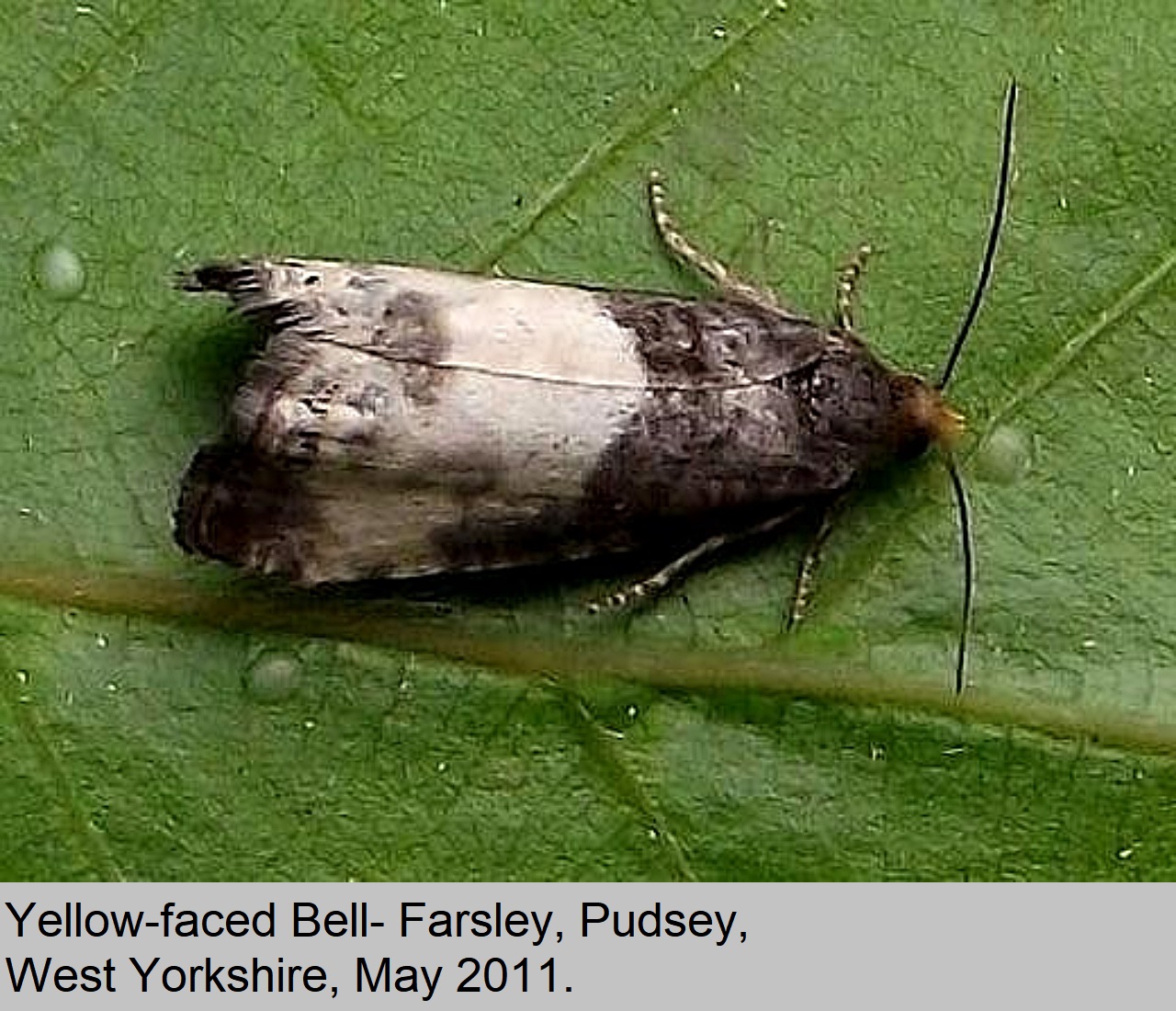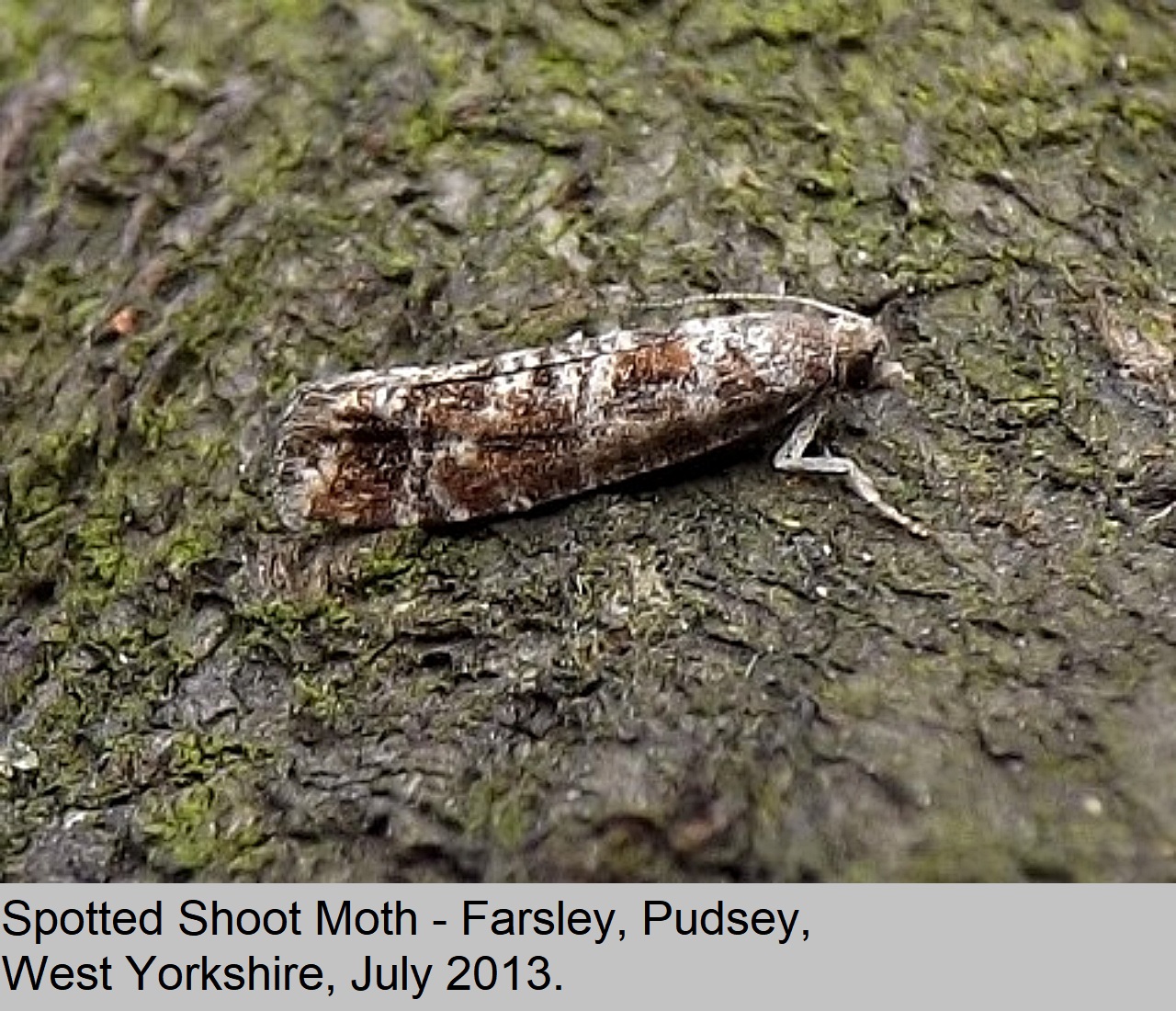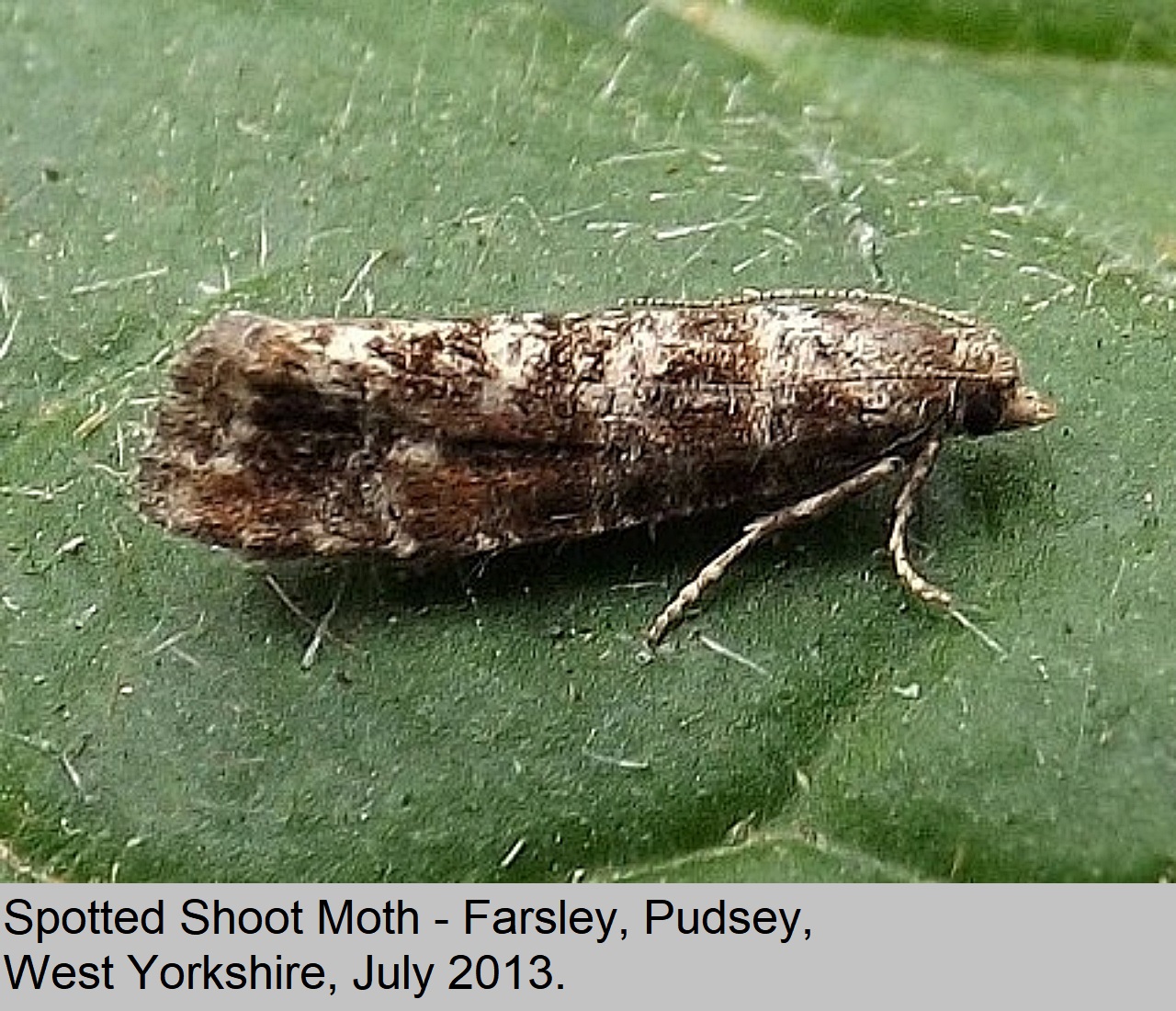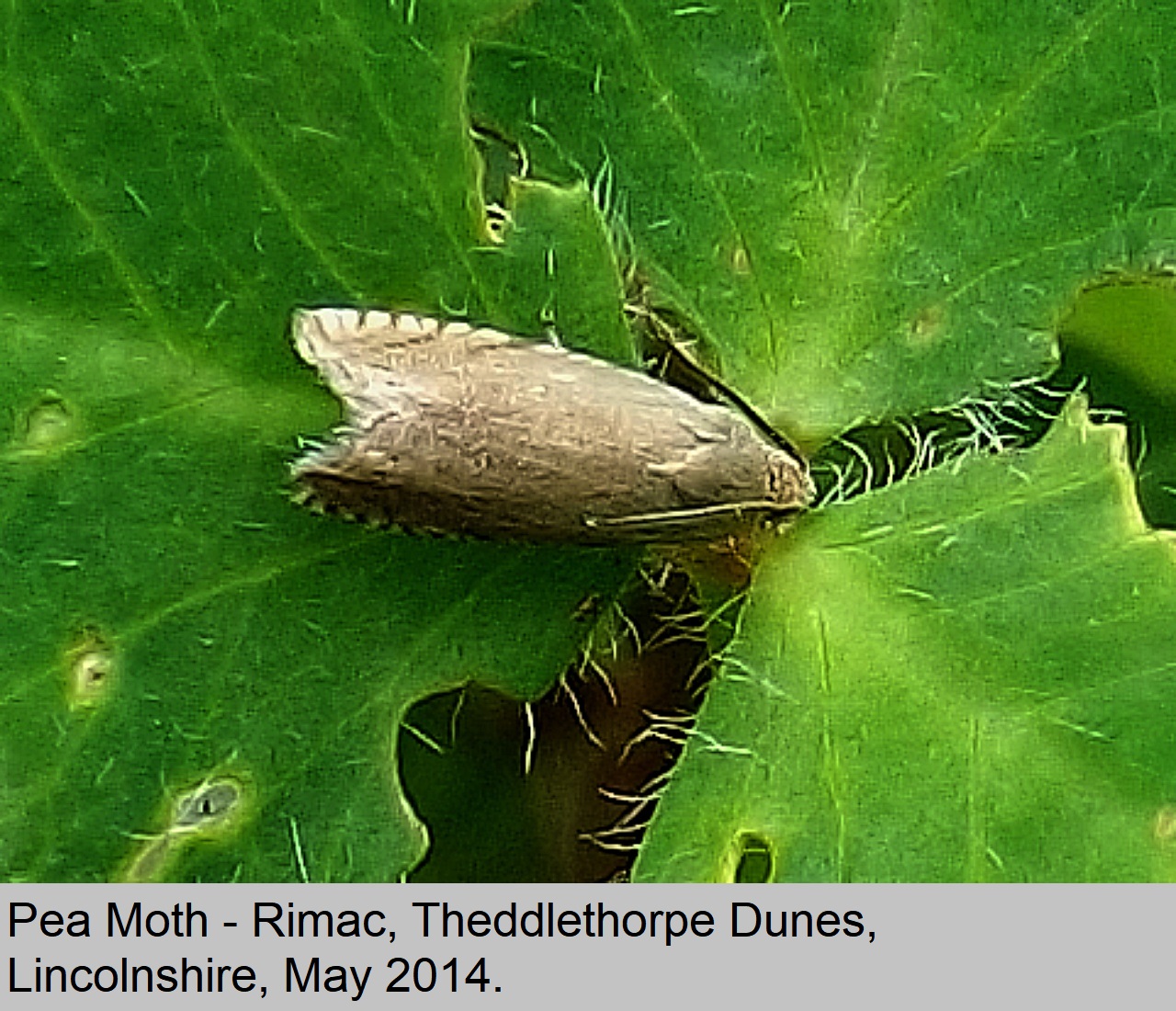|
|
||||||
|
|
|
|||||
| (Herrich- Schaffer 1851) | (Herrich- Schaffer 1851) | (Herrich- Schaffer 1851) | (Herrich- Schaffer 1851) | (Haworth 1758) |
| Tortricidae - Olethreutinae | Tortricidae - Olethreutinae | Tortricidae - Olethreutinae | Tortricidae - Olethreutinae | Tortricidae - Olethreutinae |
| Pine Bell - Epinotia rubiginosana | Pine Bell - Epinotia rubiginosana | Pine Bell - Epinotia rubiginosana | Pine Bell - Epinotia rubiginosana | Bramble Shoot Moth - Notocella uddmanniana |
| 49.251 BF 1146 | 49.251 BF 1146 | 49.251 BF 1146 | 49.251 BF 1146 | 49.294 BF 1175 |
 |
 |
 |
Status: Resident in UK. Wing Span: 13mm to 15mm. Flight Period: June and early July. Habitat: This moth inhabits places with Scots Pine and includes woodland, parks, gardens and some other situations. Comment: This species is well distributed throughout the UK mainland, in places it is fairly common. |
 |
| (Linnaeus 1758) | (Linnaeus 1758) | (Linnaeus 1758) | (Linnaeus 1758) | (Haworth 1758) |
| Tortricidae - Olethreutinae | Tortricidae - Olethreutinae | Tortricidae - Olethreutinae | Tortricidae - Olethreutinae | Tortricidae - Olethreutinae |
| Yellow-faced Bell | Yellow-faced Bell | Yellow-faced Bell | Yellow-faced Bell | Bramble Shoot Moth |
| Notocelia cynosbatella | Notocelia cynosbatella | Notocelia cynosbatella | Notocelia cynosbatella | Notocelia uddmanniana |
| 49.292 BF 1174 | 49.292 BF 1174 | 49.292 BF 1174 | 49.292 BF 1174 | 49.294 BF 1175 |
 |
 |
 |
Status: Resident in UK. Wing Span: 16mm to 22mm. Flight Period: May through into July. Habitat: Gardens, parks, tree nurseries and other places where wild and cultivated roses grow. Comment: This species is a fairly well distributed and common in the British Isles. |
Status: Resident in UK. Wing Span: 9mm to 11mm. Flight Period: May to September, in two, or three over lapping broods. Habitat: Found in woods, hedgerows, canal and river sides, gardens, where Bramble and Raspberry are present. Comment: This moth is common in England and Wales, southern Ireland, very local in Scotland. |
| (Haworth 1811) | (Haworth 1811) | (Lienig & Zeller 1846) | (Lienig & Zeller 1846) | (Lienig & Zeller 1846) |
| Tortricidae - Olethreutinae | Tortricidae - Olethreutinae | Tortricidae - Olethreutinae | Tortricidae - Olethreutinae | Tortricidae - Olethreutinae |
| Triple-blotched Bell - | Triple-blotched Bell - | Spotted Shoot Moth - | Spotted Shoot Moth - | Spotted Shoot Moth - |
| Notocelia trimaculana | Notocelia trimaculana | Rhyacionia pinivorana | Rhyacionia pinivorana | Rhyacionia pinivorana |
| 49.298 BF 1176 | 49.298 BF 1176 | 49.307 BF 1212 | 49.307 BF 1212 | 49.307 BF 1212 |
|
|
Status: Resident in UK. Wing Span: 6mm to 8mm Flight Period: May until August, in two over lapping broods. Habitat: Found where Hawthorn grows, so is found in a wide variety of places. Comment: This species is common in England, Wales and the southern half of Scotland. Found in parts of south west Ireland. |
 |
 |
Status: Resident in UK. Wing Span: 15mm to 19mm. Flight Period: May into July. Habitat: Habitats are areas with Scots Pine and includes woodland, parks, gardens. Comment: This species is widely distributed throughout the British Isles, and in some areas is quite common. |
| (Lienig & Zeller 1846) | (Lienig & Zeller 1846) | (Fabricius 1794) | (Fabricius 1794) | |
| Tortricidae - Olethreutinae | Tortricidae - Olethreutinae | Tortricidae - Olethreutinae | Tortricidae - Olethreutinae | |
| Sharp-winged Drill - Dichrorampha acuminatana | Sharp-winged Drill - Dichrorampha acuminatana | Pea Moth - Cydia nigricana | Pea Moth - Cydia nigricana | |
| 49.313 BF 1279 | 49.313 BF 1279 | 49.324 BF 1257 | 49.324 BF 1257 | |
|
|
Status: Resident in UK. Wing Span: 10mm to 15mm. Flight Period: April and May, again in August and September. Habitat: Many open, dry grassy places where Tansy and Ox-eye Daisy grow. Comment: This moth is widespread and fairly common throughout the British Isles. |
 |
Status: Resident in UK. Wing Span: 12mm to 16mm. Flight Period: May and June. Habitat: Habitats can be most places where there are wild and cultivated legumes. Comment: This moth is to be found over most of the UK mainland. It is common in the south, and scarcer in the north, and in Ireland. |
Species 49.325 to
49.372
continued on the next page |
|
Contact Website Manager dave.hatton29@btinternet.com |
Web Designer Dave Hatton |
Dave Hatton reserves the copyright on all images. © 2022 |
||||||